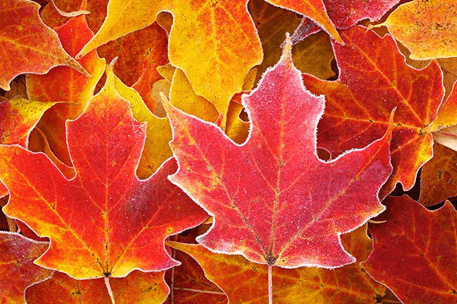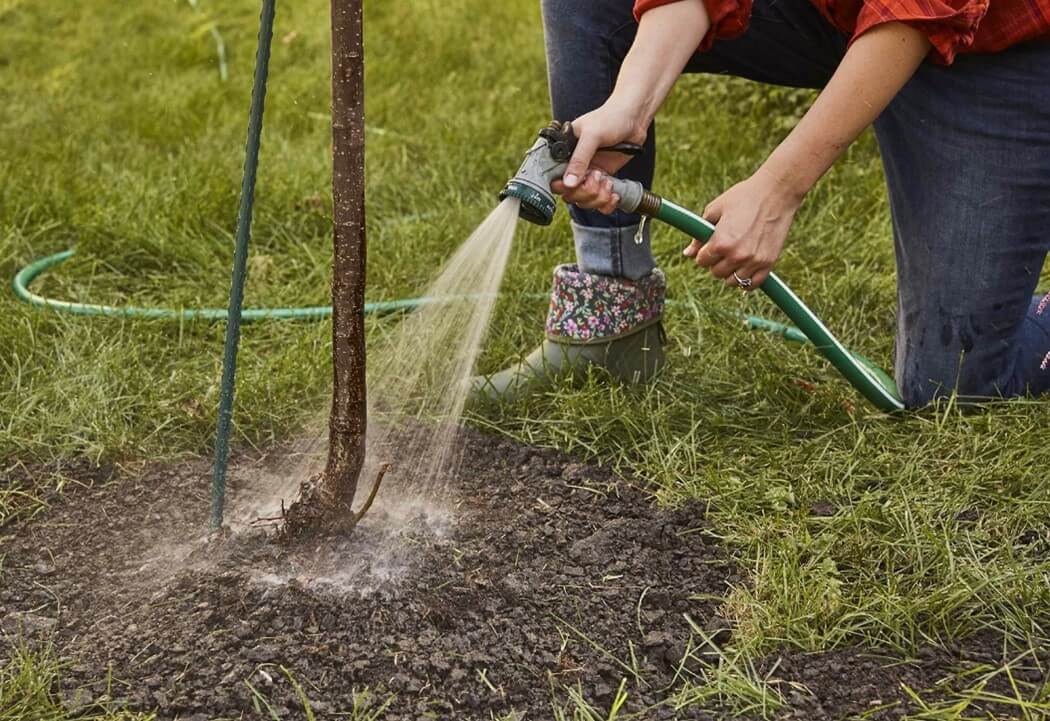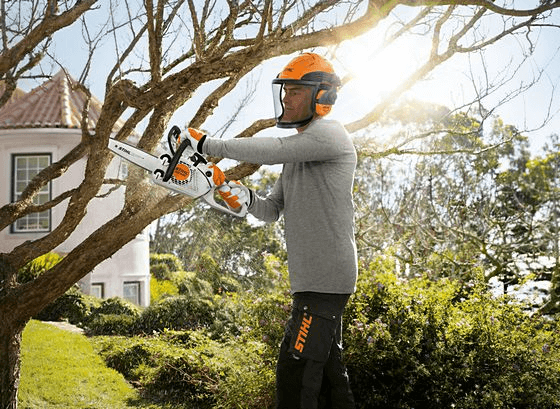Summer is coming to a close and before we know it, the leaves will be turning colors and cooler temps will be here. In this newsletter we will be discussing our upcoming fall planting season, proper watering for your trees, and the three rules of pruning.
Fall Tree Planting

Our fall planting season starts in September and we already have a long running list of customers wanting to add a new tree to their property. Let’s discuss some trees we recommend and how to best care for your new investment.
The first step in successful tree planting is selection. Choosing the right tree for the right space is key in the longevity and health of your tree. Young trees are small when planted but can quickly outgrow a space if not given enough room. Be sure to look at the mature size of a tree when determining the best tree for your space.
Some things to consider before planting are neighboring trees, fences, or structures that can become competition with your tree for space and resources. Overhead utilities can become a hindrance, especially when utility companies are required to prune them back for clearance. Underground utilities can also impede on your desired planting spot. We are required to request a utility locate ticket before planting to help us determine proper placement of your new tree.
Selecting a tree for your specific wants and needs varies customer to customer, and we will help guide you in the right direction. Customers may be looking for a deciduous tree to add shade or fall color to their property. Others may desire evergreen trees to create privacy or a wind break. Ornamental trees will add a great statement to your property with beautiful flowers.
Here is the list of recommended trees we send to inquiring customers to help narrow down their choices and lead them to a tree that we’ve found does well in our area.
Deciduous Trees
- Shantung Maple
- Sugar Maple ‘fall fiesta’
- ‘Crimson King’ Norway Maple
- Black Gum (no gum balls)
- Pin Oak
- Crimson Spire Columnar Oak
- ‘Emerald Prairie’ Lacebark Elm
- Swamp White Oak
- Bur Oak
- Shumard Oak
- Bald Cypress ‘Shawnee Brave’
- Dawn Redwood
Ornamental Species
- Red Bud ‘Merlot’
- Red Bud ‘Oklahoma’
- Red Bud ‘Rising Sun’
- Serviceberry
- Kousa Dogwood
- ‘Cherokee Princess’ Dogwood
- Chinese Fringe Tree
- Japanese Tree Lilac
- ‘Bloodgood’ Red-leaf Japanese Maple
- ‘Prairie Fire’ Crabapple (resistant to apple scab)
Evergreen Species
- Blue Atlas Cedar ‘Horstmann’
- Southern Magnolia ‘Brachen Brown’
- Norway Spruce
- Limber Pine ‘Vanderwolf’s Pyramid’
- Holly ‘Nellie R. Stevens’
- Arborvitae ‘Green Giant’
After we select the right tree for your space and plant it to proper specifications, the most important thing our customer’s can do is to continue a proper watering schedule.
If you have questions about adding a new tree to your property, give us a call and we would love to help guide you in the right direction.
Proper Tree Watering

One of the biggest problems we see with newly planted trees is watering issues that can severely stress or even kill your new investment. There is a right way and many wrong ways to water your trees, so let’s break down the do’s and don’ts of tree watering.
1. Don’t: Leave it to nature.
Leaving your tree’s water needs and survival to nature sounds easy and great (trees survive all the time in the forest without our help!), but this is like playing a game of Russian Roulette, hoping mother nature doesn’t dish out one of our hot summer droughts.
Your young trees need to be on a good watering schedule, especially when they are first planted and getting established. Here is the watering schedule we send to our customers. These tips are for when we don’t get any rain:
- Good slow soaking (10-15 gallons per 5″ diameter)
- 80-degree weather= every 3 days.
- 65-70 degrees=every 5 days.
- 50-60 degrees=every 7 days.
- 35-45 degrees=every 14-15 days.
2. Don’t: Overwater your trees!
Yes, you can love your trees too much. We’ve seen some unfortunate cases where customers thought it was necessary to water their new trees every single day. This will lead to root rot and a failing tree. Follow the watering schedule listed above, but also use the finger test. Stick your finger into the dirt, down into the root zone as far as you can. If it still feels moist, don’t water again!
3. Don’t: Rely on your sprinkler irrigation systems.
Sprinklers are great….but not for your trees. Sprinkler systems are more suited for turf grass than your trees. Trees need a deeper, longer soaking, less frequently. We recommend pulling out the hose and leaving it on the root zone for the necessary amount of time. This will allow the water to penetrate past just the first couple inches of soil, to the roots of the tree.
4. Don’t: Water the foliage of your trees.
We’ve had more than one visit with customers this season who were concerned with their browning evergreens. It took some detective work, but after asking to have their irrigation system turned on, we could clearly see the culprit. The sprinklers were hitting the same spot on the foliage, continuously, causing browning and defoliation. This can cause a host of problems, including fungal issues, rot, and scorched leaves.
5. Do: Talk to a professional.
Have more questions about proper watering for your new trees? Have questions about your tree’s health? Give us a call and we would be more than happy to assist you.
The 3 Rules of Pruning

There are many myths about how to prune a tree. Some will say there are specific times of the year you can or cannot prune your trees and there are debates on how often and how much to prune. Here are 3 basic rules of pruning that we follow:
1. The 25% Rule:
The leaf is the tree’s food factory, so try not to remove more than 25% of leaves in any given pruning.
Removing more than 25% of the tree’s leaves will reduce photosynthesis and stress the tree.
2. How is more important than when:
How and where you make the pruning cut is much more important than when—winter, spring, summer, fall.
With the exception of Oaks and Elms which should be not be pruned March-July to avoid harmful diseases, all other trees can be pruned any time of year. What is more important is HOW you make your pruning cuts. A certified arborist and trained pruning crew will know not to make “flush cuts” and where the proper cut should be made.
3. Trees don’t heal, they seal:
Make smaller diameter cuts if possible. Trees seal over wounds (pruning cuts) by adding new growth, so smaller cuts close faster.
This rule requires a little knowledge of tree biology. Trees defend against the spread of decay by walling off or sealing over wounds. By making as small of cuts as possible, we are giving the tree a fighting chance to seal off the decay before it spreads internally, causing decay pockets and cavities.
We recommend having your trees pruned professionally to remove broken limbs, stubs from past storm damage, and any deadwood that can be hazardous. Give us a call if you’d like us to take a look at your trees.

